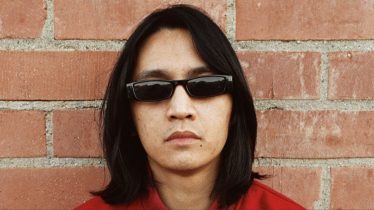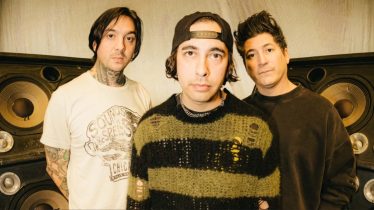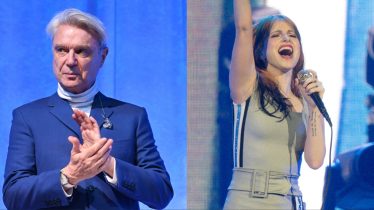7 early Sex Pistols moments that deserve screen time in FX's miniseries
On Jan. 11, FX announced it’d ordered a six-episode limited series about British punk spark plug the Sex Pistols. Titled Pistol, the show will be based on guitarist Steve Jones’ 2016 autobiography Lonely Boy: Tales From A Sex Pistol, relating the catalytic events of the band’s history and the scene they largely ignited from Jones’ perspective. Directing and executive producing: Danny Boyle, Oscar-winning director of Slumdog Millionaire, Yesterday, and Trainspotting, among other notable films.
Boyle’s involvement and the six-episode run indicates this should be many cuts above past Pistols cinematic attempts, such as 1986’s laughable if not entertaining Sid And Nancy. Plus Jordan Mooney, iconic employee of Pistols manager Malcolm McLaren and future respected British fashion designer Vivienne Westwood’s Sex (later Seditionaries) clothing shop, reported via Facebook post that she’s a technical consultant on the project. Which ensures every period detail should be scrupulously correct. (Jordan will be portrayed onscreen by Game Of Thrones’ Maisie Williams.)
Read more: 10 essential political bands every punk fan needs to hear
Rock biopics frequently infuriate fans. Hollywood either sensationalizes or condenses events or even characters for the sake of telling a story in 90 minutes. Then you have cases where people refuse to grant permission to be depicted on screen for whatever reason, forcing filmmakers to work around them, resulting in an even more fictionalized movie. Six episodes should give Boyle ample time to stretch out, go more deep and nuanced with the story. Plus, Jonesy’s point of view is perhaps more gritty and down-to-earth than certain other band members’.
Still, Boyle would be remiss if he didn’t dig into the following happenings in the band’s early history once shooting commences in March. Sure, we should see Jones’ Dickensian childhood, plus all the major happenings in their timeline, up to their implosion in San Francisco, Jan. 14, 1978. But if Boyle and scriptwriters Craig Pearce and Frank Cottrell Boyce really sank their fangs into the Sex Pistols’ early days, they could extract some choice droplets like these.
Montage of Steve Jones burglaries
In 1988, this writer sat down with Jones for a Q-and-A to promote his second solo album, the hair-metal-damaged Fire And Gasoline, for Alternative Press. One long section detailed the run of breaking-and-enterings by which he’d amassed the musical gear which eventually filtered into the back of the Sex Pistols’ tour van: a Gibson Les Paul from Rod Stewart’s mansion, another from Mott The Hoople guitarist Ariel Bender, a strobe tuner from a Roxy Music gig and what became his trademark Fender Twin Reverb amp heisted from Bob Marley And The Wailers’ tour van. (Hilariously, in his book Jones claimed he now “does not remember” if these were his victims or not, in many instances.) It culminated in Jones, drummer Paul Cook and early bandmate Wally Nightingale breaking in after the first show of David Bowie’s two-night farewell to Ziggy Stardust at London’s Hammersmith Odeon. Sneaking past a sleeping security man supposedly guarding the Spiders From Mars’ equipment, the gang made off with all the microphones, drummer Woody Woodmansey’s cymbals and Trevor Bolder’s bass amp, loading it into a hot-wired van. Yes, Johnny Rotten sang into Ziggy Stardust’s mic through the Pistols’ entire history. “It even had lipstick on it,” Jones claimed to me.
The Strand’s one and only gig, 1975
View this post on Instagram
A loose band began to develop after Nightingale, a guitarist of some experience, basically told Jones, “You’ve got all this gear now. Why don’t ya do something with it?” They rehearsed with Cook’s brother-in-law Del Noones temporarily on bass, on a repertoire of Rod Stewart and/or Faces tunes, Bad Company songs and things such as “Build Me Up Buttercup.” It emboldened then-lead singer Jones to approach McLaren, probably after he’d shoplifted from the boutique then known as Let It Rock: “Do you know any bass players?” McLaren introduced the band, now named the Strand after a Roxy Music song, to his Saturday shop assistant, Glen Matlock. After playing them Ronnie Lane’s intricate bassline to the Faces’ “Three Button Hand Me Down,” he was in. McLaren traveled Stateside to manage the New York Dolls in their final days, leaving the Strand in the care of his T-shirt printer, future Clash manager Bernie Rhodes. Early 1975, Rhodes booked them into Salter’s Cafe, up the King’s Road from what was now called Sex. Jones told this writer the three-song set—“Scarface,” written by Nightingale and his father, Bad Company’s “Can’t Get Enough” and Stewart’s remake of Sam Cooke’s “Twistin’ The Night Away”—was a “fucking nightmare.”
McLaren gifting Jonesy Syl Sylvain’s Les Paul Custom
McLaren attempted to resuscitate the last gasp of New York Dolls in early 1975 via a communist makeover: red patent leather suits custom-tailored by Westwood; a hammer and sickle flag as an onstage backdrop; singer David Johansen carrying Chairman Mao’s Little Red Book onstage; advertisements bearing the slogan, “What are the politics of boredom?” They imploded on tour in Florida, in a burst of toxic egos and drug habits. McLaren brought guitarist Syl Sylvain’s white, pinup-stickered Gibson Les Paul Custom with him back to England. He handed it to Jones, informing him that Nightingale was neither a strong enough player nor personality for the band, and that Jones wasn’t a robust enough singer to front the band: “Here, become the guitarist! Get rid of Wally!” Jones told this writer that he spent the next six months waking in the morning, necking speed pills and playing along with Iggy and the Stooges’ Raw Power “until my fingers were fucking bleeding.” He emerged after that period earning the right to spraypaint “GUITAR HERO” across that amp he’d heisted from Bob Marley.
Enter Johnny Rotten
This day in Pistols history… August 1975. This month marks 42 years since the very 1st Pistols rehearsal with John Rotten © John Gray 1975 pic.twitter.com/UDUAuK4z3U
— Sex Pistols Official (@sexpistols) August 1, 2017
So now the band McLaren had renamed “Sex Pistols” needed a frontman. Rhodes suggested an abrasive character thrown several times out of Sex, known for hobbling up and down the King’s Road in torn suits and a Pink Floyd T-shirt, on which he’d written “I HATE” above the logo in ballpoint pen. His hair was slashed cruelly and dyed green. He snarled and hurled insults at everyone passing by. This hideous individual, John Lydon, roundly insulted everyone when invited by McLaren for a drink with the band at a local pub. He was invited back to Sex, given a shower head and ordered to sing along with Alice Cooper’s “I’m Eighteen” on the jukebox. He snarled, went into a series of hunchback poses, flailing about in a parody of typical rock frontmen. He got the job. Jones took one look at Lydon’s green, mossy teeth and renamed him “Johnny Rotten.” A star was born. And McLaren now had a band more potent and combustible than his original vision of a subversive Bay City Rollers.
First gig at St. Martin’s College of Art
This day in Sex Pistols history… November 6th 1975. The very FIRST Sex Pistols concert at St Martin's College, London. pic.twitter.com/WZtXnYZpcY
— Sex Pistols Official (@sexpistols) November 6, 2017
Toward the end of 1975, the Sex Pistols needed to go public. Matlock scored them two back-to-back gigs: Church of England teacher’s training facility St. Martin’s College on Nov. 6 and Central School of Art and Design the next day. The first night, they attacked ’60s standards such as the Who’s “Substitute” like a caged pitbull pouncing on raw meat. Jones was blazing on amphetamine, opening his amp’s volume control all the way. Employees of Sex cheered them on, as Rotten snarled contempt for the headlining band, ’50s revivalists Bazooka Joe. Having seen the future, their bassist Stuart Goddard quit the next day. He’d reemerge in 1976, fronting the Pistols inspired Adam And The Ants—he was Adam.
Early gigs/Manchester
Punk Rock Festival, 100 Club 1976. Photography by Barry Plummer. NMTB 40th Anniversary edition. December 1st. https://t.co/eLIbYHfYzP pic.twitter.com/SsEyQMiDVS
— Sex Pistols Official (@sexpistols) October 24, 2017
The early Sex Pistols roared at a consumptive momentum. They crashed other bands’ gigs, lying that they were the opening act, blazing through their raw blasts of rage until the plug was pulled. They graduated to renting a Soho strip club, filling the time between strippers before a growing crowd of young people dressed in Westwood’s repurposed fetish clothing. Playing venues such as the Marquee or 100 Club saw them eventually getting banned from them all, either for putting mics through monitors, picking the pockets of the headliners as they played or Rotten snarling taunts like, “Tell us, wot’s it like having bad taste?” Or “We’re all fucking drunk, like you cunts should be.” They’re writing new anthems such as “Pretty Vacant” and “No Feelings.” Meanwhile, members of the pub acts they’re opening for, such as Joe Strummer, are quitting their bands to start new ones in the image of this vicious opening act. Soon, the Sex Pistols are piling in rented vans and touring the country, utterly puzzling the locals with their anti-entertainment. By the time they roll into Manchester June 4, 1976, locals file out in the process of forming their own punk bands: Buzzcocks, the Fall, Joy Division and a New York Dolls obsessive named Steven Morrissey many years away from dropping his first name.
“Anarchy In The U.K.” debuts on TV
Before the Pistols returned to Manchester to make their TV debut on local pop show So It Goes, hosted by future Factory Records boss Tony Wilson, Jones complained in rehearsal about the “Beatle chords” Matlock kept trying to show him. According to the bassist’s memoir I Was A Teenage Sex Pistol, he goaded the guitarist into coming up with a better riff. What Jones created was a descending chord progression similar to those employed on many classic glam-rock singles. Rotten stewed over the next few days, a lyric forming in his skull, processing political ideas from discussions with Rhodes and Pistols graphic designer Jamie Reid. Shortly thereafter on Manchester television, the Sex Pistols detonated that descending glam-rock chord progression, as Rotten served Britain a warning: “I am an Antichrist/I am an anarchist/Dunno what I want, but I know how to get it/I wanna destroy passersby/’Cause I wanna be anarchy!” Almost four minutes later, Matlock kicks over his mic stand, Jones hurls Sylvain’s old Les Paul against Bob Marley’s old amp in a hail of feedback and Rotten glares in contempt at a studio audience too stunned to applaud. They were the future—your future.







